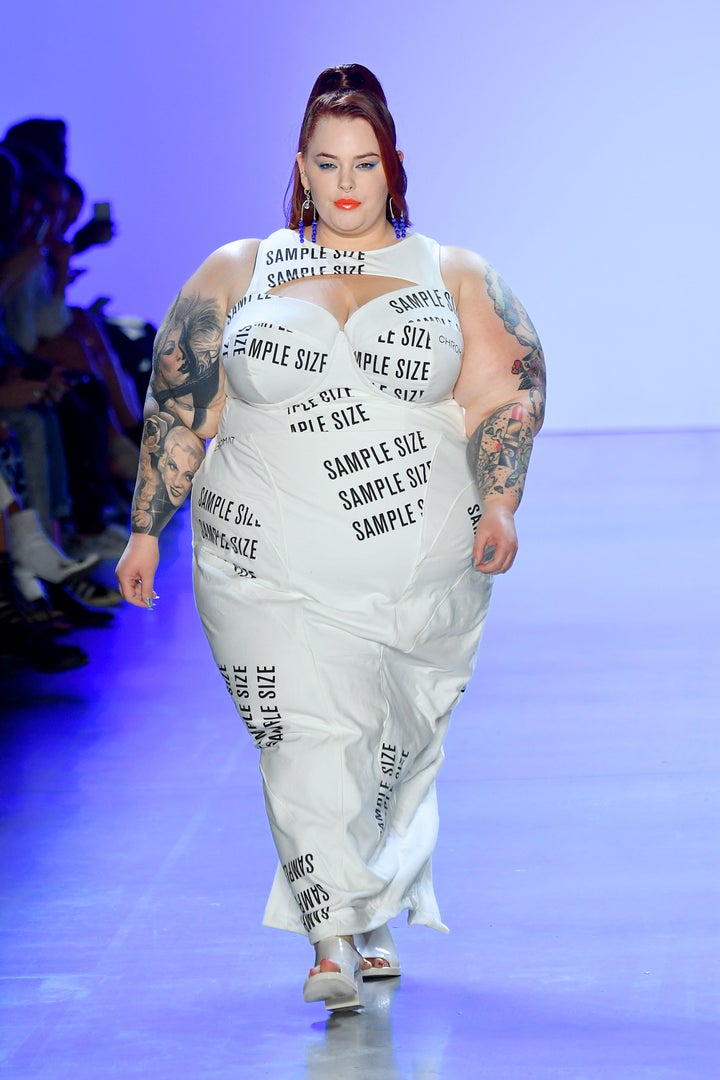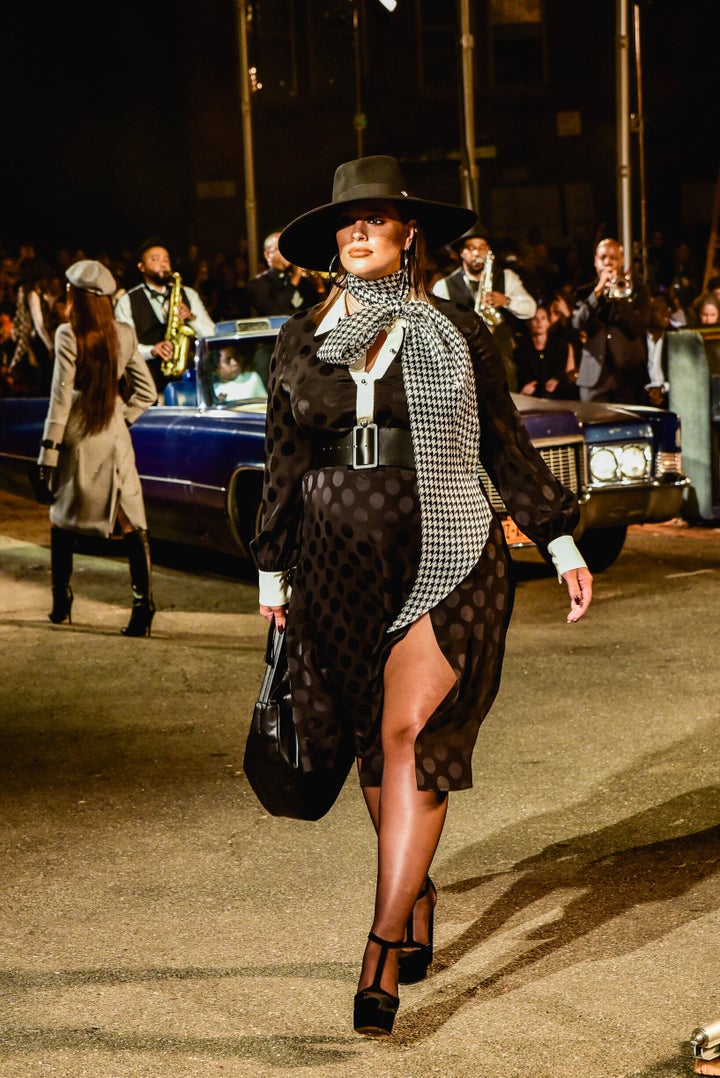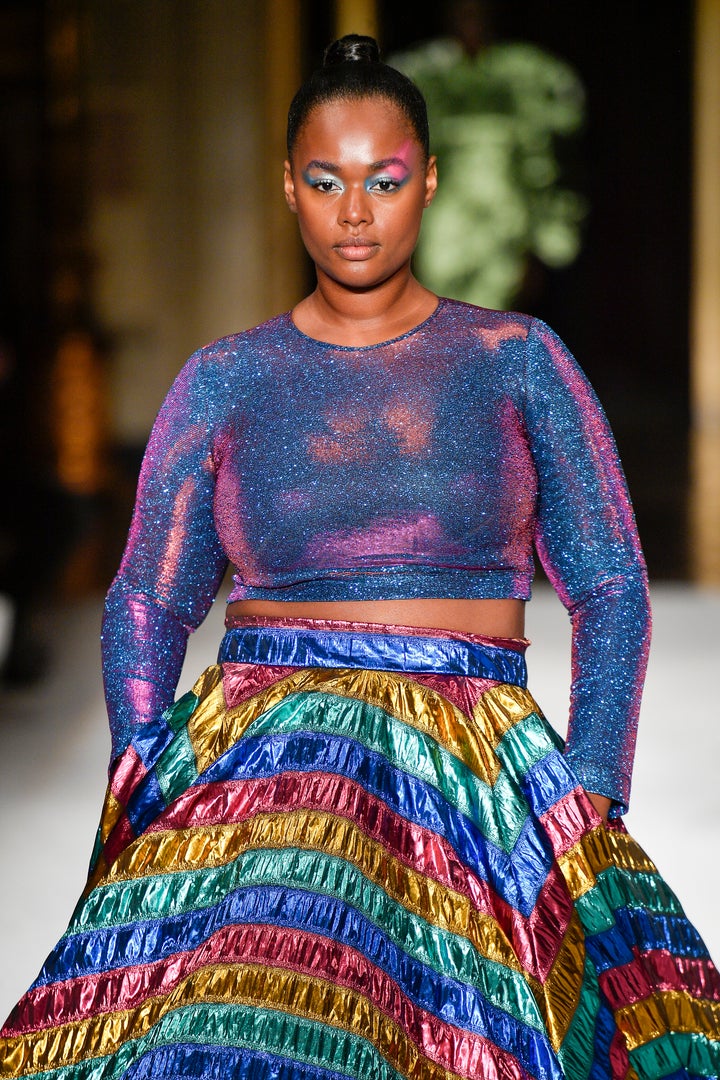Recently I’ve been thinking about the conversation around size inclusivity on the runway, or rather the lack thereof. It seems to me that it has lessened, or become less buzzy if you will, which is a great fear for those who have spent their careers trying to create real change and hoping with every passing season that it’s not just a “fad.”
My concerns coincided with the start of New York Fashion Week, where, as it turns out, there were some things to celebrate this season. According to theFashionSpot’s seasonal diversity report for New York Fashion Week, 68 plus -size models walked a total of 19 shows for spring 2020 ― up from the bleak previous season when 37 models walked in 12 shows.
Tess Holliday strutted down the Chromat runway wearing a “sample size” dress, perhaps a dig at designers who often blame financial and sample limitations for their refusal to expand their size offerings. And Rihanna’s Savage X Fenty show was a refreshing contrast to Victoria’s Secret’s shows, which only display women of a certain shape and size wearing lingerie.
There was Tommy Hilfiger and Zendaya’s show, which prioritized inclusion and representation. And there was, as always, Christian Siriano, the unofficial answer to designers unwilling to work with women based on their size and my official hero of inclusivity at fashion week and beyond.
It sounds good, right? But here’s the thing. When you break it down by show, there’s a glaring issue: 41 of the 68 were all cast in just three shows: Tommy, Chromat and Siriano. The rest of the castings came in solo or small groups, the highest being Kate Spade New York, Tadashi Shoji, Area and Burnett, which cast three plus-size models each, theFashionSpot points out.

It reminded me of this tweet, written by Fashionista editor-in-chief Tyler McCall, which stopped my endless scroll in its tracks during a recent bout of procrastination.
“Truly no shade but what are the quote-unquote ‘inclusive’ brands going to do on the runway this season if Ashley Graham is pregnant,” she wondered. And I wondered, too.
Graham announced her pregnancy on Instagram in August and has been mostly absent from the runways this season, with the exception of the Tommy Hilfiger and Zendaya show on Sept. 8.
McCall’s musing was valid. What would brands do without their star player, the woman who has largely led the charge for the surge in size inclusivity on the runway in recent years and who is often considered to be the representative of the entire universe of plus-size women?
It would be the ultimate test of intentions.

Perhaps that’s why even though my original hypothesis that fewer plus-size models were included this year was wrong, my instinct was correct. It’s not enough for the optics to look good if optics are just that ― optics. Just as it isn’t Graham’s job to represent an entire population, neither is it the job of these three fashion houses to carry the bulk of the responsibility to be inclusive and shift archaic standards of beauty still rife in this industry.
And New York is the best-case scenario. Things only get less progressive once you cross the Atlantic. The numbers from London, Paris and Milan are still to come, but last season, not a single non-straight-size model walked in Milan, and nine walked in Paris, seven of which walked in Tommy x Zendaya.
Model Hunter McGrady made a commitment this season to only attend shows by or work with brands that prioritize inclusivity for spring 2020. As a result, she recalled in a Glamour piece, she turned down over 30 jobs.

“For me, it’s more important to make it known that I’m not going to support somebody who doesn’t support me,” she said. “If you’re not including plus-size people, that’s basically what they’re saying to me. And I’m not OK with that. Hopefully, if enough of us take a stand, it’ll start catching on. We’re no longer supporting exclusivity.”
I salute the progress made by brands like Tommy Hilfiger, which, with the help of Zendaya, has made a major shift over the past two seasons. And I salute McGrady for using her voice to take a stand ― even when it means losing a paycheck.
But when it comes to designers who we see, season after season, including just one plus-size model in the mix, I wonder how many more times we can see it happen before we take stock of what their inclusion actually means? Are they challenging the status quo because they are sick of it themselves, or are they doing it to create headlines and check a box? I’m not really sure anymore.